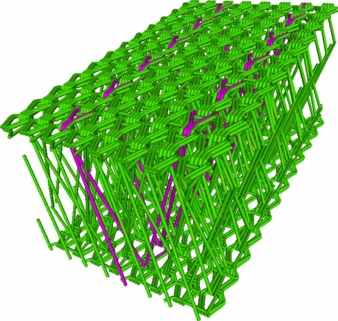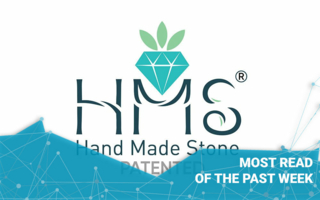03/05/2021 – Series: Realistic simulation of technical textiles – Part 2 — auf Deutsch lesen
Fraunhofer ITWM: What happens due to tension or compression?
FibreFEM computes mechanical effects on textiles – by Annika Dreßler, Fraunhofer ITWM
“TexMath” is a modular software program that enables simulation of mechanical material properties and an associated optimization of textile products. The software of the Fraunhofer Institute for Industrial Mathematics ITWM consists of several components: “MeshUp” has already been presented, now “FibreFEM” follows.
Both in the field of medicine and in the sports and clothing industry, there is a constant need for techniques that accelerate the development time of textile products and optimize textile designs. The “Technical Textiles” team of the “Flow and Material Simulation” department of Fraunhofer ITWM offers software TexMath, that makes it possible to predict textile behavior efficiently during stretching, bending, torsion, or compression. “Thus, production process chains can be adapted to new materials in advance,” says Julia Orlik, Fraunhofer ITWM.
Virtual testing
With the structure generator MeshUp, the first component of the software was already presented, which enables the creation of periodic textile structures. Through the FibreFEM component, the scientists can compute effective mechanical properties, such as tension and compression, for the textile structures generated with MeshUp, such as for woven, braided and knitted textiles or spacer fabrics. In addition to tensile and shear properties, effective bending as well as torsional properties can also be determined from the textile structure and the yarn properties.
FibreFEM requires the microstructure description from MeshUp as well as the fiber cross-section geometry and the mechanical fiber properties. Mechanical fiber properties include, for example, tensile stiffness and friction. On this basis, the mechanical textile characteristics are computed. This also offers the potential for targeted design and optimization of new textiles with a given mechanical property profile.
When using FibreFEM, the friction coefficients between the yarns are taken into account and included in the simulation of the effective properties or identified from the experimental validation with the fabric.
That’ not all
After MeshUp and FibreFem, the third component “FIFST” is presented, which is used for complex stress scenarios.




